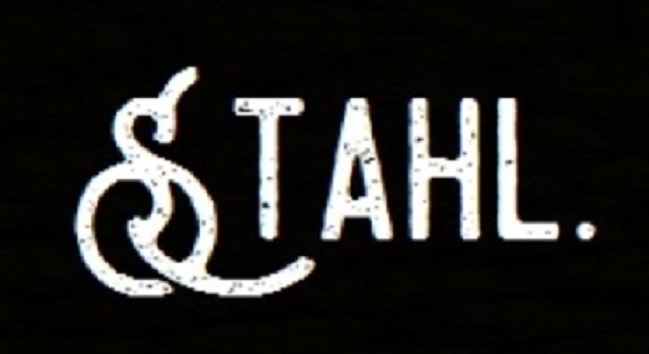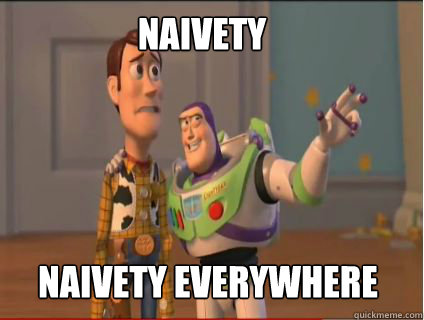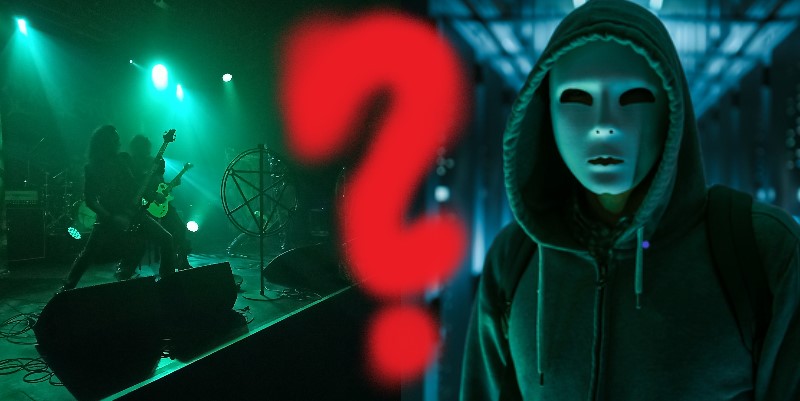Since 2013, with the online and print journal ‘Helvete: A Journal of Black Metal Theory‘,1 there is an established or at least institutionalized discourse closely connected to Metal Music Studies, which dedicates itself to only theorizing Black Metal. Already earlier publications on Extreme Metal focused, at least partially, on Black Metal2 but with this journal (and its analogous blog and accompanying conferences)3 theorizing Black Metal (and thus putting it into the framework of theoretical science with its identitary and cultural traditions) gained a whole new level. For cultural history of heavy music, as practiced in this blog, this is of great interest.
On the one hand, this means that not only Metal in general but especially one of its most extreme manifestations, Black Metal, is growingly being considered as a subject of reseach. It gets more scientific attention, progresses to the ‘mainstream’ of supposedly ‘bourgeois‘ humanities research and is considered ‘being worth’ of forming a subject of scientific attention.4
On the other hand, this trend of growing attention in the cultural mainstream, media and popular culture, means that Black Metal, as a distinct field of identitary and cutural practice of ‘subculture’, is transforming in it itself. It has to adapt its cultural concept to a new context, in which growing acceptance of its ‘being art’ becomes a threat to its self-fashioning; since its origins, it has emphasized rebellion, criticism of society, and, very often, nihilism, misanthropy or satanism. Now, this seems to be at stake.
This current situation of Black Metal, gaining acceptance and at once having to adapt itself to a new cultural situation, is the historical crossroads which I want to reflect on in this post. Being at this crossroads, Black Metal discourse in 2016 is a fascinating subject of research. I claim that looking precisely at 2016 Black Metal (theory) at this crosscroads could make us to have to differentiate our concepts of ‘reality’ in Metal Music Studies.
In Black Metal (theory) discourse of mid-2016, we find a cultural currentof theoretical thinking and identitary practice that is at the same time essentialist and ironically-deconstructive. It claims to be authentic but at the same time it radically questions every philosophy of essentialism. And, that being the important point, this seemingly fruitless contradiction – encouraging authenticity and being deconstructive at once – ‘works’ as a cultural discourse. Usually, fans and musicians do not see any flaws in these supposed contradictions and paradoxes in Black Metal – they even see it as its form of coherence.5
Like this, current Black Metal challenges our understanding of ‘reality’, our cultural philosophy of Wirklichkeit and réalité. We are facing a cultural current and strand of thought which has contradiction and paradoxicalities as its form of the production of coherence and meaning. Dealing with paradoxes and contradiction is as old as philosophy and science themselves.6 But in recent times, an own discourse of ‘Contradiction Studies’ emerged, most of all centered around the University of Bremen, Germany,7 which tries to deepen our understanding of contradiction in culture and cultural history.
This is where my thought comes in: I put forward the hypothesis that, given the ambivalent situation of Black Metal in 2016, facing acceptance and struggling with its own tradition of being ‘anti-establishment’ at once, it is a form of culture that, currently, is able to perform a mechanism of the production of reality and meaning, in which both is possible – stressing authenticity and performing deconstructive nihilism. In fact, empirically both seem to condition each other in mid-2016 Black Metal.
Thus, my point is that current Black Metal discourse could be seen as a ‘Schrödinger’s cat of culture’:8 being ‘dead’ and ‘alive’ at once, for Black Metal means to be capable of culturally being essentialist–constructive and ironic–de(con)structive at once, in the same space and at the same time. This is the result of the current situation of Black Metal – a challenging thought for the New Cultural History, which claims every form of culture to be only deconstructively available. This is seriously questioned – and actually, dealing with current cultural history of Black Metal philosophy, it maybe has to be questioned.
Black Metal theory, Black Metal philosophy
Black Metal theory (to be seen as the currently most elaborated and institutionalized discourse adhering to the ‘black’ culture of its subject, and seeking linkages to traditional theoretical-philosophical science at once) is the discursive field, in which the mentioned processes of culture are negotiated: in the discourse of Black Metal theory, we find the present ‘battlefield’ where the cultural concept of Black Metal (comprising nihilism, rebellion, misanthropy, satanism, and many other ‘blackisms’) and the tradition of classic ‘Western’ and occidental scientific thought meet.
There, they are negotiated, build forms of alliances but also contradictions and paradoxes which, nonetheless, function as a form of the production of coherent meaning. The discourse of Black Metal theory, its journal (online and print),9 its blog and its conferences,10 are, as a sphere of digital reality, a materialization of the current crossroads in Black Metal culture. In this respect, the mission statement of the Helvete-journal makes a clear point:
Helvete is a new open-access electronic and print journal of black metal theory.
Helvete is dedicated to continuing the mutual blackening of metal and theory inaugurated by the Black Metal Theory Symposia. Not to be confused with a metal studies, music criticism, ethnography, or sociology, black metal theory is a speculative and creative endeavor, one which seeks ways of thinking that ‘count’ as black metal events—and, indeed, to see how black metal might count as thinking. Theory of black metal, and black metal of theory. Mutual blackening. Therefore, we eschew any approach that treats theory and metal discretely, preferring to take the left-hand path by insisting on some kind of connaturality between the two, a shared capacity for nigredo.11
This quotation, a sort of welcome to scholars and Black Metal music fans alike, carries in itself a clear message: the journal is, by its initiators and editors, supposed to be a discourse of mutuality, where the cultures of Extreme Metal subculture and classical theoretical thought (philosophy) meet. At this crossroads of culture, we find the place in space and time where something new comes to life. Neither this new creature of culture is only theory and philisophy nor it is only Black Metal. And, too, it is not something in-between both of them, but a new breed of hybridization.12
To understand what is happening at this crossroads, we have to ask what is the subject of this new hybridization. I think we can best answer this question thinking of the mode of the production of meaning that is at work in both cases: in (1) traditional philosophical thought and (2) Black Metal culture. (1) Very schematically (I am aware of the conceptual roughness of this approach),13 we can ‘label’ conservative and traditional ‘Western’ philosophy to be a constructive, often idealist producer of meaning, and, thus, reality (of course, for instance Discourse Analysis, which is very relevant to cultural history, is not only ‘constructivist’).14 Seen in a perspective of longue durée, it produced reality constructively by imagining new spaces of knowledge.15
(2) In contrast to this, traditional Black Metal as a form of practice, encouraging another ‘style’ of thinking (which we actually should think of as another mode of thinking)16 refused to act as a cultural incubator of constructivism. Its intellectual and conceptual roots17 were to be against classical discourse of thought, philosophy, science and its ethics – in short, its production of meaning and reality.18
Traditional Black Metal discourse generates reality by trying to deconstruct, often even destroying conventional forms of meaning. Its meaning was, up till it came to the crossroads examined, an ‘anti-meaning’. Its traditional mode of the production of meaning has been ironic-decontstructivist.19 Hence, to write a cultural history of the theory and philosophy of Black Metal in mid-2016, thinking of its current discursive tajectory, means to ask for the ongoing changes in the production of reality at this crossroads.
A ‘Schrödinger’s Cat of Culture’?
So, looking at this crossroads in Black Metal (theory) discourse in mid-2016, we see the crossing of two before separated paths of culture. It is a crossroads of discourse, of practice and theory, where constructivist imaginations and de(con)structive imaginations of realities give birth to a new and hybrid sphere of mutuality – its product, in terms of meaning and reality production, has to be a new form of a paradoxical métissage of constructive and deconstructive cultural text at once.
This peculiar situation, a birth of a discourse, where construction and destruction of meaning is possible in the same place and at the same time, changes the axiomatics of the production of reality. In this discourse, which is the epitome of the overall cultural-historical situation of Black Metal and its philosophical core in mid-2016, both is possible: to adhere to the orthodox ethics of nihilism, satanism, misanthropy and like ‘blackisms’ of Black Metal subculture, in a deconstructive way; and, at once, to practice the philosophical constructivism of Enlightenment thought, constructively imagining human history of progress, emancipation and solidarty.
The condition of discourse, which follows from this , is a very delicate one – it could be summarized in the metaphor of a ‘Schrödinger’s cat of culture’: in Erwin Schrödinger’s classic thought experiment from the year of 1935, summarizing the then knowledge on quantum mechanics, a cat could be dead and alive at once. This metaphor, in a nutshell, allegorizes the seemingly impossible contradiction which is inherent to the current situation of Black Metal culture, in terms of its discursive production of reality and meaning. It is characterized by a seemingly irrational and paradox discursive structure, which enables us to have constructive-idealist and de(con)structive-ironic imaginations of reality at once.
Thus, Black Metal musicians and fans, and scholars of Black Metal theory (philosophy), may emphasize their harsh criticism of any positive attitude towards human culture and history; and, at once, in the same cultural text and narrative, they are capable of positively speaking of themselves as authentic cultural players, musicians, music-fans or intellectuals. Hence, the descisive question to ask, as the central result of my line of thought, is maybe important for the entire intellectual enterprise of Metal Music Studies: if Black Metal discourse could, currently, be defined metaphorically as such a ‘Schrödinger’s cat of culture’, what does that imply for the concept of reality in Heavy Metal, in general? Do we have to think of the cultural history of heavy music as a historical field of ‘Contradiction Studies’, in which even the concept of reality is contested?20
Cf. https://helvetejournal.org/, retrieved 1/8/2016 ↩
Cf. Keith Kahn-Harris: Extreme Metal. Music and Culture on the Edge. Oxford 2007; Dayal Patterson: Black Metal. Evolution of the Cult. New York 2013; also, cf. idem: Black Metal. Prelude to the Cult. N.p. 2013; idem: Black Metal. The Cult Never Dies. N.p. 2015; idem: Black Metal. Into the Abyss. N.p. 2016. ↩
Cf. ibid; http://blackmetaltheory.blogspot.co.at/, retrieved 1/8/2016 ↩
Cf. ibid. ↩
Cf. ibid. ↩
Cf. Roy Sorensens: A Brief History of the Paradox: Philosophy and the Labyrinths of the Mind. Oxford 2005; Mark Sainsbury: Paradoxes. Cambridge 1988. ↩
Cf. http://www.woc.uni-bremen.de/ ↩
Originally, the thought experiment of the cat, that can be dead and alive at once, was published in 1935; cf. Erwin Schrödinger: Die gegenwärtige Situation in der Quantenmechanik. In Naturwissenschaften 23 (1935), 812. ↩
Cf. https://helvetejournal.org/, retrieved 1/8/2016. ↩
Cf. http://blackmetaltheory.blogspot.co.at/, retrieved 1/8/2016. ↩
https://helvetejournal.org/, retrieved 2/8/2016, emphasis in the original. ↩
For an article employing a similar research interest, cf. Peter Pichler: The Power of the Imagination of Historical Distance: Melechesh’ ‘Mesopotamian Metal’ as a Musical Attempt of Solving Cultural Conflicts in the 21st Century. In: Metal Music Studies. Forthcoming. ↩
For a recent thought of sociology of science, cf. Richard Schantz/Markus Seidel: The Problem of Relativism in the Sociology of (Scientific) Knowledge. Frankfurt 2011. ↩
Cf. Achim Landwehr: Historische Diskursanalyse. Frankfurt/Main ²2009. ↩
Cf. Helge Kragh: An Introduction to the Historiography of Science.Cambridge 1990; too, of great interest in this respect, cf. Olaf Breidbach: Bilder des Wissens: zur Kulturgeschichte der wissenschaftlichen Wahrnehmung. Munich 2005. ↩
Cf. Kahn-Harris, Extreme Metal; Patterson, Evolution. ↩
Cf. ibid; Patterson, Prelude to the Cult. ↩
Cf. ibid. ↩
Cf. ibid. ↩
Cf. http://www.woc.uni-bremen.de/. ↩



